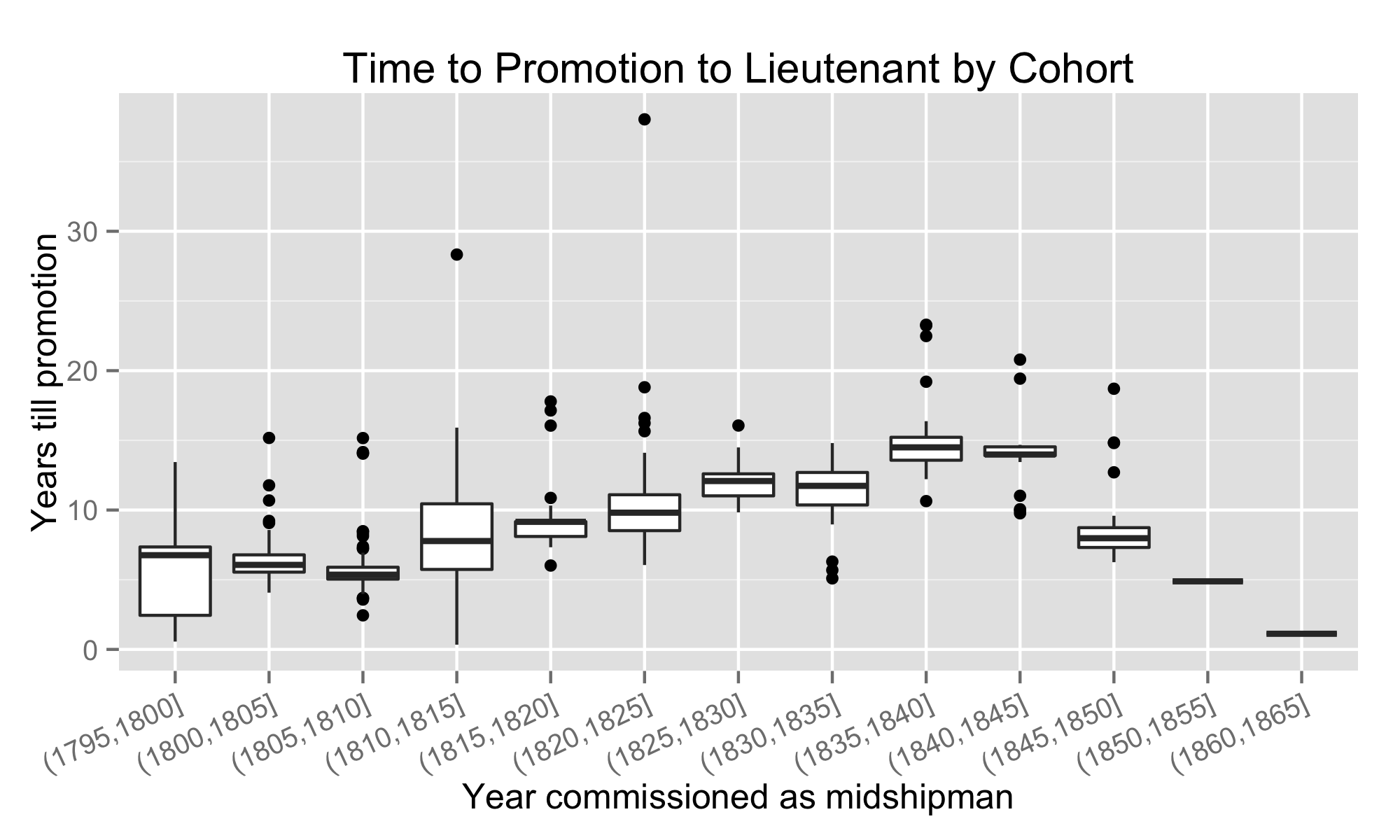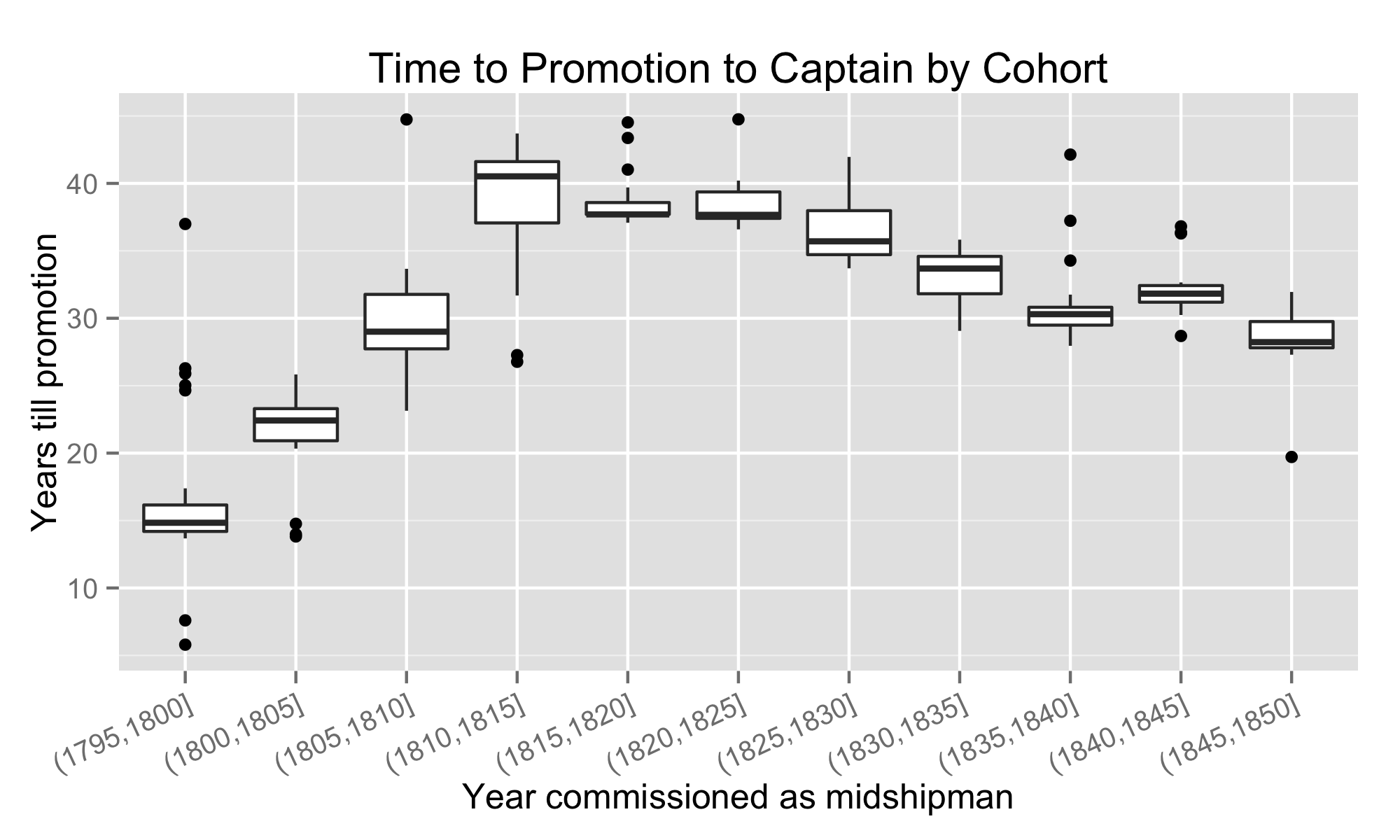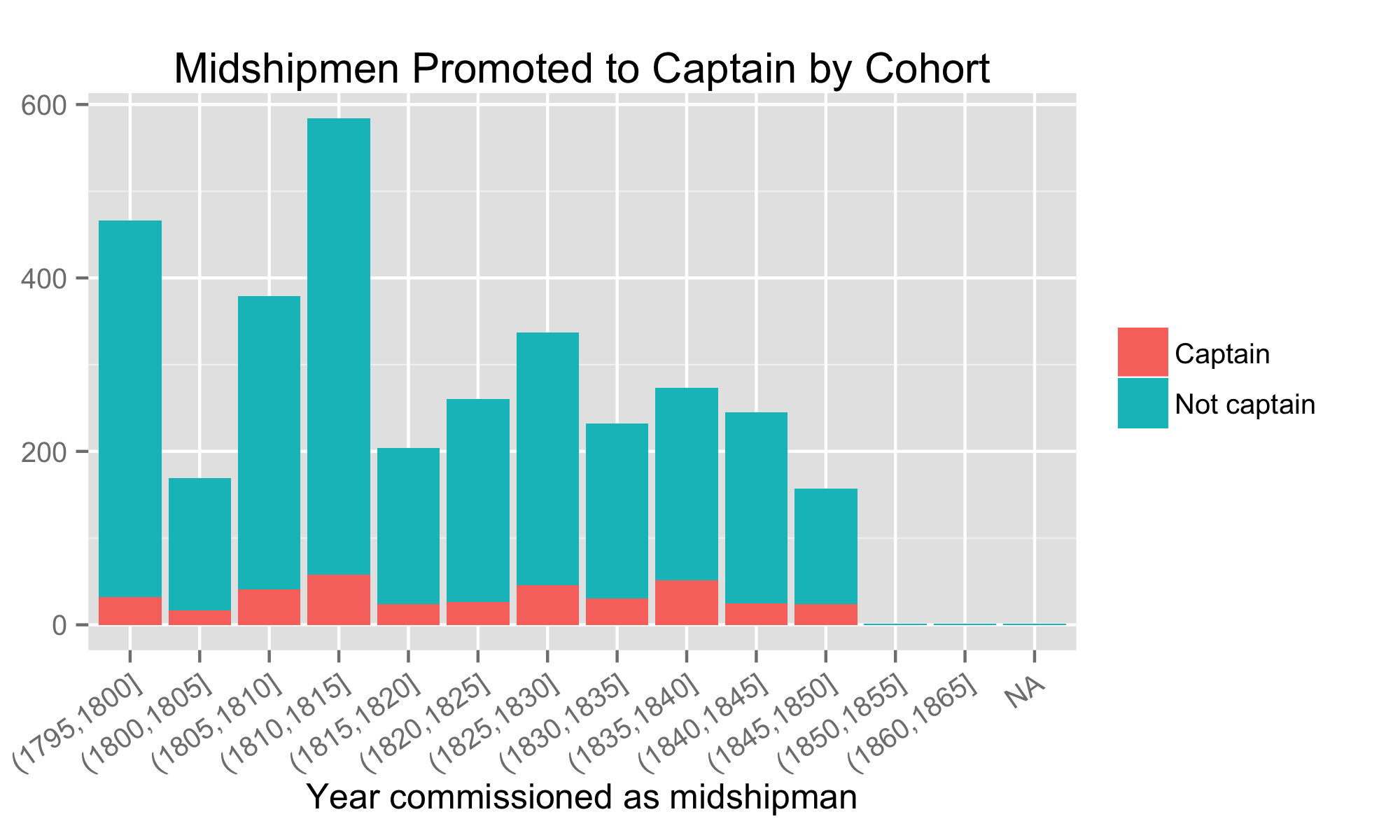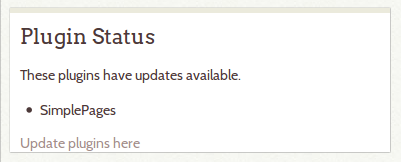In American naval history, officer promotions have gotten a lot of offhanded comments but little substantive analysis (one exception I just found: Waiting for Dead Men’s Shoes, by Donald Chisholm, a book I look forward to reading at greater length). The commonplace assertion is something like this: After the War of 1812, it became almost impossible for midshipmen to get promoted up the ranks, and even if they did get promoted, the time to promotion was excessively long. This trend continued throughout the 1820s into the 1830s and ’40s.
I’ve always been intrigued by these assertions, since the evidence to back them up is always anecdotal. But the resources to test the hypothesis are actually available online, for free, from the Naval Historical Center. A few months ago, I created a data set based on the NHC’s documents that included dates of promotion for every single officer in the navy from 1798 to 1849. You can read about that here. But I didn’t have the technical expertise to do the analysis I wanted to do.
Enter my collaborator, Lincoln. This weekend, he did the data analysis and created some graphs in R to show exactly what was happening in the navy regarding promotions. You can find the guts of his work here.
Time to Promotion
We decided that a box-and-whiskers graph would be the best way to display the results of the analysis. So here are two graphs: Time to Lieutenant and Time to Captain.
What we see in these graphs does not exactly follow the commonplace assertions. It is obvious that pre-War of 1812 officers got promoted much more quickly than their post-War of 1812 counterparts. Thus far the commonplace holds.


But what does not hold so well is the idea that the trend of long waits was ever-increasing. In fact, the midshipmen who entered after the War of 1812 received promotion more quickly than those who entered during the war. In fact, by the cohort of 1835, the time to promotion has been reduced by 10 years. Notice also that the cohorts become more tightly knit: fewer outliers and a lesser variance among the main group.
There may be several explanations for these phenomena. First, in a much larger field of candidates, such as the cohort of midshipmen who joined during the War of 1812, one would expect a wider variance, resulting in a longer time to promotion. The midshipmen of the War of 1812 became the peacetime lieutenants and captains of the slave-trade blockade, the commerce protection, and the diplomatic missions to East Asia. None of those duties had the makings of quick promotions–no daring, no battles, no glorious victories. Nevertheless, the long waits for promotion for these men did not necessarily mean equally long waits for the next cohort.
The more tightly knit groups of the later years indicate, I believe, a more concerted effort at standardization and professionalization.
Possibility of Promotion
The other piece of the commonplace, that it was almost impossible to get promoted, can be framed a different way: What percentage of the total midshipmen received promotions all the way up to captain?
Again, the charts tell a story not quite in line with the general assumptions.


As you might expect, attrition of midshipmen in the War of 1812 is quite high. One would expect that, since many joined the navy during war but didn’t want a career of it.
You can see, though, from the midshipmen-to-lieutenant chart, that in the later years, close to half of the midshipmen were promoted to lieutenant. This is remarkable for various reasons which are probably too complicated to go into here, but suffice to say, it’s not the impression that one might get from reading a history of the navy in the 1830s and 1840s.
Fulfilling the Maker Challenge
So, how does this data and analysis fulfill the maker challenge?
I think doing analysis using data crunching and visualization is one of the most exciting features of digital humanities for a historian. This is a different sort of Maker Challenge entry from some of the others. It’s something that’s going to be useful for my future research, and I am looking forward to continuing to work with this data and push back on more commonplace assertions in the field.
The Challenge entry wouldn’t be complete without mentioning my collaborator again–Lincoln Mullen. He’s the one who wrote the scripts and made the pretty graphs.














